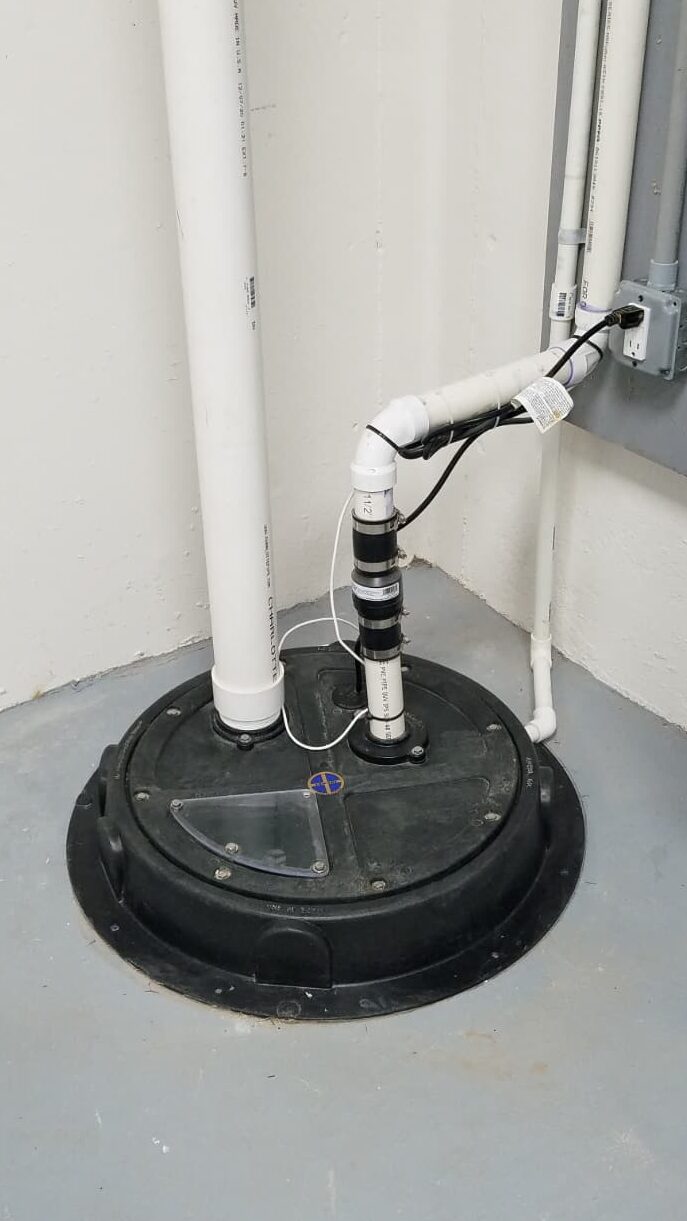
If you live in an area prone to heavy rain, flooding, or a high-water table, a sump pump is a crucial piece of equipment to protect your home from water damage. Here’s what you need to know about sump pumps, how they help, and when you might need one.
What Is a Sump Pump?
A sump pump is a device installed in the lowest part of a basement or a crawl space to remove accumulated water. It sits inside a sump pit – a small, specially dug basin – and activates when water reaches a certain level. The pump then directs the water away from your home, typically to a storm drain, dry well, or designated drainage area.
How Sump Pumps Help
Sump pumps play a critical role in preventing water damage and foundation issues. Here’s how they help:
- Prevent Basement Flooding – When heavy rain or rising groundwater seeps into your basement, a sump pump automatically pumps it out before flooding occurs.
- Reduce Mold and Mildew – By keeping your basement dry, a sump pump helps prevent mold and mildew growth, which can cause health issues.
- Protect Your Foundation – Excess water can weaken your foundation over time, leading to cracks and structural damage. A sump pump helps maintain the integrity of your home.
- Lower the Risk of Electrical Damage – Water and electricity don’t mix. A dry basement means fewer risks of electrical issues or damage to appliances stored in the area.
Signs You Might Need a Sump Pump
Not every home requires a sump pump, but if you notice any of the following, you might need one:
- Frequent Basement Flooding – If water regularly collects in your basement, a sump pump can provide a reliable solution.
- High Water Table – Homes built in areas with a naturally high-water table often experience moisture issues, making a sump pump a wise investment.
- Damp or Musty Smell in the Basement – Even if you don’t see standing water, excess moisture in the air can indicate groundwater problems that a sump pump could mitigate.
- Cracks in Your Foundation – Water pressure around your home’s foundation can lead to cracks and instability over time. A sump pump can help relieve this pressure.
- Nearby Homes Experience Flooding – If your neighbors frequently deal with basement flooding, your home could be at risk as well.
Types of Sump Pumps
There are two main types of sump pumps:
- Submersible Sump Pumps – These are installed inside the sump pit and are designed to operate underwater. They tend to be quieter and more efficient.
- Pedestal Sump Pumps – These h ave the pump motor moutned above the pit, making them easier to maintain but typically louder than submersible models.
Maintenance Tips for Sump Pumps
To keep your sump pump working effectively, follow these maintenance tips:
- Test It Regularly – Pour water into the pit to ensure the pump activates and drains properly.
- Clean the Pump and Pit – Remove debris or sediment buildup that could clog the system.
- Check the Discharge Line – Make sure the water is being directed away from your home without obstruction.
- Inspect the Backup Power Source – Many sump pumps rely on electricity, so having a battery backup is essential in case of a power outage during a storm.
Final Thoughts
A sump pump is a valuable investment for homeowners who deal with water intrusion. It helps protect your basement, foundation, and belongings from costly damage. If you notice signs of moisture issues in your home, installing a sump pump could save you time, money, and headaches in the long run.
If you’re unsure whether you need one, give Ottagan Plumbing a call and we can help assess your risk and determine the best solution for your home.

Leave a Reply